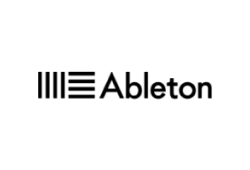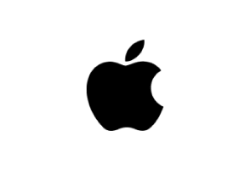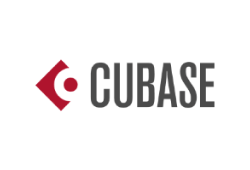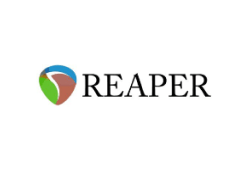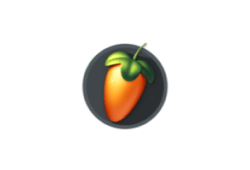Best Music Production Software for Beginners in 2025
Updated: September 12,2023
Music production used to be reserved almost exclusively for those with the education, money, and time needed to buy expensive gear and learn all the ins and outs of making music.
The advancement of specialized software for producing has created some of the best music production software for beginners, changed the rules of the game, and opened the field of audio production to millions of aspiring creators. While most producers use additional equipment (e.g., a MIDI keyboard) to boost their production capabilities, at the center of the music-making process lies the DAW.
This acronym stands for Digital Audio Workstation: Software that lets you create, record, and edit music files, uniting all of your hardware and tools in a single ecosystem.
Here, we tried to find the best DAW for beginners by reviewing the top solutions on the market and rating them based on their production capabilities and ease of use.
- Great Session view
- Affordable
- Optimal for live performances
- Potentially limiting Intro tier
The first version of Ableton saw the light of day in 1999; today, this music studio software is quite popular among producers, especially those working on electronic music.
Since we’re focusing on the best music-making software for beginners in this article, we decided to review the Ableton 11 Live Intro edition. Despite somewhat limited features compared to pricier options, this affordable software is still a potent tool. As its name suggests, it’s also tailored for users interested in live performance.
Features
Ableton Live’s core functionalities are split between two main screens: Session and Arrangement. You can quickly switch from one to the other with the Tab key. The Arrangement view pretty much follows the well-known structure found with most recording software: It contains tracks laid along a left-to-right timeline. It’s essentially a multi-track dashboard, allowing you to easily mix and arrange effects, MIDI, loops, etc.
What makes Ableton perhaps the best DAW for electronic music is the Session view. Within it, you can freely mix and match different audio and MIDI clips to see if they work well together. Here, you can create so-called seams - a combination of effects, instruments, and sounds you’ve compiled to play together. You can later sort loops and clips in the Arrangement view.
Ableton also comes with MIDI sequencing, meaning you can practically turn anything - including sampled beats - into a MIDI file. As possibly the best electronic music software, Ableton also features rich automation options.
Pricing
As mentioned, we’re focusing on Ableton’s Intro version here. This music software for beginners differs from pricier packages in the number of available instruments, sounds, audio, and MIDI effects. Still, Ableton 11 Live Intro nets you four software instruments, over 1,500 sounds, 21 audio effects, and 8 MIDI effects.
The Intro package will cost you a one-time fee of $99. The Standard and Suite editions are substantially more expensive - $449 and $749, respectively.
Final Thoughts
If you’re looking for the best cheap music production software for beginners, Ableton is an excellent choice. Intro’s $99 price point is more than affordable for software this advanced, particularly if you have a knack for electronic music.
- Best MAC DAW you can find
- Rich sound library
- Good-looking interface
- Only for Apple devices
Apple is behind two incredibly popular DAWs - GarageBand, which is freeware - and Logic Pro. We opted to include both within a single review because we believe transitioning from the best free recording software to a paid choice is made much easier by staying within the confines of one program and its familiar interface.
GarageBand is often lauded as the best option for absolute beginners, and Apple Logic Pro is its advanced sibling.
Features
The first thing you’ll notice about Apple’s free music production software is just how approachable it is compared to some of its competitors. Its modern dashboard lays out functions intuitively, in stark contrast with some of the programs on our list that look like glorified file managers from the 90s.
This free music-making software for beginners also allows you to color-code tracks in the dashboard for easier tracking. Behind the shiny exterior hide many features you wouldn’t expect from free software. GarageBand’s rich sound library includes instruments, guitar and voice presets, drums, and much more.
One of GarageBand’s standout features is the Touch Bar functionality. Through it, Mac laptops with a Touch Bar can transform it into drum pads or one-octave keyboards, making composing music much more intuitive. GarageBand also lets you plug in a USB keyboard or guitar, customize bass tones, and control the sound shape directly from the app.
However, there are several features the easiest DAW for beginners lacks. When you start feeling their absence, consider switching to the paid version of this music recording software - Apple Logic Pro.
Its most noticeable addition is the full-featured Mixer. While Logic Pro’s free sibling has some mixing capabilities, they are fairly limited. With Logic Pro, you get access to the standard Channel Strips, aux channels, and everything else expected from great DAWs.
Live Loops are also one of the biggest advantages of the paid version, granting you the ability to create and arrange tracks in real time. This is somewhat similar to Ableton’s Session view, where you can place loops, samples, or recorded audio into cells that you can then combine or move around.
Being one of the best DAWs, Logic Pro contains an enviable selection of audio effects, including those of vintage EQ models, old-school hardware compressors, and so forth.
There is plenty more to discover with Logic Pro, like Flex Time and Flex Pitch editing, MIDI quantization, external storage, and so forth.
Pricing
Luckily, the Apple Logic Pro has a one-time price of $199.99. However, one of the biggest drawbacks of this software is that it’s available only to macOS users. Windows fans will have to look elsewhere.
Final Thoughts
Without a doubt, Apple’s GarageBand is among the best free DAWs studio software solutions. The ability to transfer projects seamlessly to Logic Pro while staying within a similar interface is a godsend for Mac-bound producers.
- Easy to use
- Now available on macOS
- Useful templates
- No audio editor with Fruity version
Initially launched under the name FruityLoops back in 1998, this product grew to become some of the best music-making software available for those starting out. For the purposes of this article, we’ve decided to review FL Studio’s intro package, which still carries the software’s original name - Fruity.
Features
Compared to its first version, which came out 20 years ago, it’s evident that years have been kind to FL Studio. The first FruityLoops version looked outdated even by 1998 standards. Luckily, the FL Studio of today has a pretty, intuitive interface, with a drag-and-drop system and a fully scalable UI.
Until recently, FL Studio could be found exclusively on ‘best DAW for Windows’ lists, as it was unavailable for macOS. Thankfully, its version 20 added cross-platform capabilities, opening the door for Mac users.
At its core, FL Studio works similarly to other DAWs: In the Channel Rack, you compile and combine all the sound sources you wish to use in your track. FL Studio refers to those sources as ‘generators.’ These generators can be connected in a MIDI sequence or a step-based grid.
Each sound source comes with a 16-step sequencer, which can then make a drum pattern. The Channel Rack also features a top-class Piano Roll that you can use within currently selected patterns. As the best music-making software for beginners should, FL Studio lets you look over the sound sources you’ve compiled within the Channel Rack within the Pattern window and arrange them within the Playlist tab.
Fl Studio Fruity helps you make your own music with the templates in the Channel Rack tab. You can automatically populate the Channel Rack with basic kicks, snares, claps, and so forth.
Pricing
The price for the Fruity edition is $89. Its main drawback is the lack of an audio editor and audio recording capabilities. This means that you can only produce in-the-box; plugged-in instruments are not supported. On the plus side, this easy music production software package also comes with 83 instruments and effects.
One of FL Studio’s greatest strengths is the lifetime upgrade guarantee. Whichever edition you purchase, you can rest assured that all subsequent updates will be free of charge.
Final Thoughts
While the essential software doesn’t let you record audio, you’ll be able to quickly and easily create effective tracks, with pre-built templates there to help you out. All in all, Image-Line’s FL Studio Fruity edition is often considered the best music software for fledgling producers with good reason.
- Top-class software
- Full recording capabilities
- No USB licenser required
- Each update is charged
Next up, we have yet another household name in the music production market: Steinberg’s Cubase pioneered several core features you see with any good recording software. For example, it introduced the revolutionary block-based arrangement screen used in practically any self-respecting DAW.
Cubase’s market dominance is a thing of the past, with plenty of strong DAWs out there standing shoulder-to-shoulder with Steinberg’s product. Nonetheless, Cubase remains in the top echelons and pushes out yearly updates for its products. The version we’re reviewing here is Cubase’s mid-range option - Elements.
Features
Unlike the cheapest editions of many competing DAWs, Cubase’s Elements is a surprisingly well-rounded product that contains nearly all the tools you might need at the beginning of your producing career.
This product from the best production software provider comes with full recording, sequencing, and audio editing capabilities - a significant improvement over FL Studio’s somewhat limiting Fruity plan. Another advantage of this particular edition of music software is that it doesn’t require a USB eLicenser.
Additionally, all Cubase 11 editions come with the same audio engine and resolution, meaning you’ll always have top-class sound quality. The only difference between editions is the size of the effect library at your disposal.
You’ll probably find the interface pretty familiar if you’ve used music production software before - after all, Cubase came up with many of the recognizable elements first. That’s not to say that this is the easiest music production software to use, but you’ll quickly learn to appreciate the vast number of options at your disposal. You’ll get access to 64 MIDI tracks, 48 audio tracks, 24 VST instrument tracks, around 1,000 instrument sounds, and 47 VST audio effect plug-ins.
On the downside, while Elements does grant you access to the sampler track, chord pads, MixConsole, and the basic score editor, powerful EQ plug-ins like Frequency won’t be available to you.
Pricing
The pricing for Steinberg Cubase 11 Elements is pretty much on par with any program claiming to be the best DAW for beginners: You’ll be paying a one-time fee of $99.99 for Elements, but you’ll need to shell out more bucks for each upgrade. The two pricier editions currently cost $337.98 and $587.98.
Final Thoughts
Each update makes this already impressive DAW even more powerful. With Cubase, you can rest assured you’ve picked one of the most comprehensive music production options out there.
- Extremely lightweight
- No minimum requirements
- Very affordable
- Outdated interface
In this article, we’ve set out to find the best music production software for beginners, and there probably isn’t a more amateur-friendly DAW than Cockos Reaper. While Reaper doesn’t have the prettiest interface, it’s probably the easiest software to master, thanks to the complete customizability of its UI.
Cockos Reaper started small when it launched in 2006. However, by version 6 - the current iteration - it grew into a feature-rich DAW, with affordability and lightweight software as its biggest strengths.
Features
Reaper’s recording software is available for both macOS and Windows users. Once you fire up it for the first time, you’ll quickly see that its interface makes it both the hardest and easiest music-making software at the same time.
The initial dashboard you’re greeted with is practically empty. The only two things present are the tracklist and arrangement window, which may leave users wondering how to start working. The visuals could even be described as horrendous, especially compared to the likes of FL Studio and Apple Logic Pro.
However, it would be unrealistic to expect a jaw-dropping interface from a DAW whose installation weighs only 11 MB on Windows (17 MB on macOS). Additionally, Reaper can quickly transform into the best audio recording software thanks to skins and preset layouts, in case you’re not ready to create a custom UI.
Reaper’s capabilities include live audio and virtual instrument recording, notation editing, and mixing. There’s even a video editor if you need visual material to go along your tracks. The audio and MIDI editing tools are incredibly robust, with a simple-to-use piano roll.
One of Reaper’s main downsides is that the vanilla installation does not feature any virtual instruments or loops - not surprising for a DAW with such a tiny storage footprint. This means that you’ll have to rely on third-party plugins to broaden Reaper’s capabilities and turn it into the best music creation software. Thankfully, there are loads of free ones on the internet, and this DAW supports most plugin formats.
Pricing
Affordable pricing is one of the main strong points of this beat-making software. While the standard commercial license for Cockos Reaper 6 costs $225, the company offers a vastly discounted license for individual use, non-profits and educational institutions, or those planning on using the software commercially, but who make less than $20,000 a year in gross revenue. If you fulfill any of these requirements, the price goes down to $60.
This is definitely a bargain, since the best music recording software usually costs around $100. On top of that, you receive free lifetime updates with the license you purchase.
Final Thoughts
Cockos Reaper’s rugged interface requires an adjustment period. However, once you get to know the program, Reaper 6 has an incredible scope of possibilities for a low price. Just make sure to grab all the right plugins, and you’ll see why this is one of the most popular DAWs.
Best Beginner DAWS in 2025
- Ableton 11 Live Intro
- Apple Logic Pro
- Image-Line FL Studio Fruity
- Steinberg Cubase 11 Elements
- Cockos Reaper 6
Choosing the Right Music Production Software
DAWs are, at first glance, incredibly complex. Once you start one up or look at the screenshots, you’ll most probably be taken aback by the sheer amount of options - various knobs, effects, channel strips, and so forth. Beginners especially might have trouble identifying essential functions, let alone assessing the worth of specific software compared to other DAWs.
Hence, we decided to lay out some core features to look for in the best DAW software. Simultaneously, these features and metrics also serve as the basis of our evaluation process, by which we rank music-making software.
Operating System and Hardware Requirements
One of the first things you need to know about music production software is that its availability can be highly dependent on the OS you’re running. Most music production programs are made either for macOS, Windows, or both.
Mac users will, in most cases, have a greater selection of DAWs available, as Windows-based production software often has a macOS version as well. However, those looking for the best music production software for beginners on a PC will find that many macOS DAWs are unavailable on Windows. Still, there are plenty of options available for both operating systems, and some even work on Linux.
The other thing to keep in mind is the system requirements of the software you’re eyeing. While no DAW requires a high-end gaming PC to run, they can be a bit more demanding than you think.
The two requirements to look out for are processing power and RAM, as the software utilizes both resources somewhat heavily, especially during more advanced or lengthy producing sessions. Whether you’re looking for the best music production software for beginners on a Mac or Windows, you should also check whether the OS version you’re using supports the music creation software.
Lastly, you’ll want to make sure that your sound card and audio interface support ASIO drivers. The ASIO protocol allows DAW software to directly communicate with the audio interface without going through the OS, netting you substantial performance gains.
Ease of Use and Interface
Since we’re focusing on beginner-friendly music production software in this article, a program’s ease of use is a hugely important factor. However, we have to get one thing out of the way first: Even the best beginner music software couldn’t be described as truly easy to use. Music production is a skill that takes a while to learn, and years to master. More likely than not, your first hours with this type of software will be spent trying to navigate its functions.
Still, there are noticeable differences between providers in how intuitively their workstation is laid out. Additionally, we take into account whether there’s a tutorial system included with the software to help newcomers.
Audio Plugins
Audio plugins are independent pieces of programming that are ‘plugged in’ to the best music production software to broaden its functionality. While music mixing software usually comes with a set of basic functionalities, you’ll almost certainly need to add plugins to expand them.
Plugins can add equalization options, effects, dynamic range control, instruments, synths, and so forth. Plugins are practically essential for any serious production endeavor. While you can probably do without them at the very start of your producing career, you’ll learn about their importance pretty quickly.
There are three main plugin formats to watch out for when browsing the best DAWs for beginners, but keep in mind that not all DAWs support all formats. If you plan to use a specific set of plugins, make sure the production software you’re eyeing supports them.
The three primary plugin formats are:
- Audio Units (AU) - a system-level plugin provided by Core Audio, native to macOS and iOS. However, it’s also used by many DAWs that are not exclusive to Mac.
- Virtual Studio Technology (VST) - the most popular plugin format for music-producing software. It is mainly used to stimulate the use of recording studio hardware within DAWS for adding synths and effects to your library.
- Real-time Audio Suite (RTAS) - while the best free music production software for beginners will often include support for the previous two plugin formats, the RTAS is used solely within Pro Tools systems.
Before you commit to purchasing a DAW, make sure you’ve checked its audio-plugin compatibility.
Pricing
Like with most products, the pricing for music-making programs varies by provider. Thankfully, besides paid solutions, there’s a handful of robust free options as well. But, before you open your wallet and purchase the piece of software you found to offer the most bang for your buck, you should keep a few things in mind.
First of all, check out the best music production software for beginners with free solutions currently on the market. Free production software - e.g., Apple’s GarageBand - can be a great starting point for inexperienced enthusiasts. There are several other worthy free choices to keep an eye on as well.
However, free software is often very limiting in its functionality, and you’ll want to switch to a paid version sooner or later. If you decide to take that step, we recommend you opt for an upgraded version of the software you’re already using. By doing this, you’ll be staying within the interface you grew familiar with, instead of one where you’d have to learn the layout again.
Also, when looking at different pricing tiers for the most popular DAWs, don’t immediately go for the top-tier choices. Music-making apps often have many features, but you probably don’t need all of them. List the capabilities that suit your needs, related to the type of music you want to make, and purchase an app accordingly.
Genre Preference
Lastly, your genre preference is a hugely important aspect not to lose sight of when choosing music production software. Hip-hop, EDM, pop, and rock have vastly different production needs. While it’s rare for music recording software to be highly specialized for a certain genre, some software is just better adapted for some types of music.
Frequently Asked Questions
FAQ
While all of the DAWs we’ve reviewed here are suitable for beginners in one way or another, Apple’s GarageBand and Logic Pro are widely considered the easiest to use.
Currently, the most powerful music production programs are Cubase 11 and Ableton, based solely on the number of features included. However, other programs might be more suitable for specific genres.
Definitely, but it will require some time, and you won’t learn it overnight. Look for comprehensive guides and tutorials on the internet and follow them diligently.
First of all, find yourself the best music production software for beginners that matches your needs. After that, you should probably get a MIDI keyboard, master the software’s capabilities and controls, study the available plugins, and start practicing.
While free music production programs are somewhat limiting in the features they offer, Apple’s GarageBand and Audacity are among the best free solutions.
Your email address will not be published.
